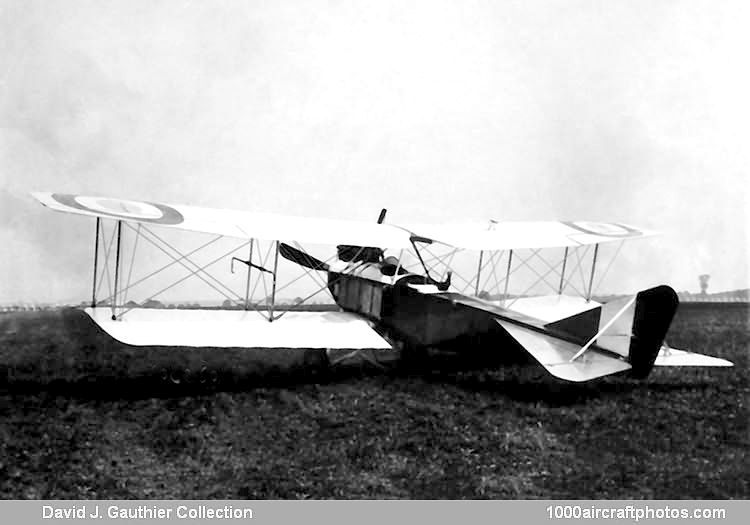The immensely strong plywood covered, slab-sided fuselage (first designed and used by Dipl. Ing. Grohmann in some ten aircraft before the B.I), and which was to become the hallmark of so many Albatros two-seaters, was continued. It was based on four main longerons which were of ash forward of the cockpits and spruce aft of this point, and tapered to a vertical knife-edge at the rear. A rounded metal panel at the extreme nose end provided evidence that same, albeit very little, consideration had been given to "nose entry" otherwise the 100 hp Mercedes engine, with its cumbersome chimney exhaust manifold, was fitted to the bearers with most of the cylinder block exposed.
As was often the case with these early machines, the pilot sat in the rear cockpit and the observer sat forward under the center section trestle, with no little restriction of view, although some concession to downward visibility was made in the large, square cut-outs in the lower wing roots. The usual radiator accoutrements of the period cluttered the fuselage sides adjacent to the front cockpit. The large, triangular, tail surfaces stemming from the B.I, and to be perpetuated in the later C.I, were to be seen. Both the fixed surfaces and the unbalanced rudder and elevator control surfaces were a light-gauge welded steel tube structure with fabric covering. The fin and tail plane were braced with a streamlined steel strut.
In the wing structure there was little departure from previous practice except to standardize on a two-bay cellule, with the top wing of slightly greater span than the bottom. By being built up on two box-spars, with the rearmost spar at approximately mid-chord and with wooden ribs of thin airfoil section, an extremely flexible trailing edge resulted, which obtained a considerable degree of inherent stability. This asset was considered a prerequisite in these early aeroplanes and characterized many subsequent Albatros two-seaters. The ailerons were of the same structural medium as the tail surfaces and had a slight inverse taper with considerable wash-out.
The operating cables were rather untidily run externally along the surfaces of the lower wing and led up to the actuating crank over pulleys near the lower extremity of the rear, outer, interplane struts. A quite orthodox V-type landing gear chassis, of streamline section steel tube, was fitted, and a claw-type brake was mounted on the center of the axle. The ash tail skid was mounted externally on an inverted pylon structure and sprung with elastic shock chord.
The Albatros B.II operated on reconnaissance duties from the beginning of WW I until well into 1915, when the hostile activities of the Allied scouts hastened the withdrawal of the B-type machines and their replacement with the armed, and more powerful, C-type two-seaters. However, the docility of the Albatros B.IIs flying characteristics, combined with the economy of its low horse-power motor, admirably suited it for training duties, and in such manner it continued to serve the German flying services.
At a later date the airframe was strengthened, especially the tail section, and the radiators were removed from the fuselage sides to a neater installation in front of the center section leading edge; additionally 100 hp Mercedes D.I, 120 hp Mercedes D.II or 120 hp Argus As.II engines were installed. In this version the machine was known as the B.IIa, otherwise it differed little from the B.II. Dual control was fitted and the machine was used almost exclusively for ab initio pilot training until the end of WW I.
The pictured aircraft was captured by the French forces."
The following data relate to the B.II.
